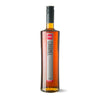Lets say we have the following equation:
X Coffee (light,floral) + Y Coffee (Chocolate, nutty) + Z Coffee (savoury,body) = C (balance)
Woah! Let's break this science stuff down a bit...
Single-Origin Coffee
Before we explain what a coffee blend is, it seems appropriate to explain what a single-origin coffee is. It's given away in the name and you probably guessed it already - it's a coffee that comes from one origin or region.
However, a single origin can either describe a coffee bean as coming from a single origin like Ethiopia, or it can describe a coffee as coming from a single farm in that region. Both meanings for this term are often used interchangeably.
So, Single-Origin Coffee = a harvest of coffee beans from one region or farm.
Coffee Blend
Again the term gives it away... But if you guessed a coffee blend is a blend (mix) of different single origins then you'd be correct!
A coffee blend can be any amount of origins blended together. Although 5 - 7 origins should generally be enough to help a roaster achieve the flavour profile they are aiming for.
The 'flavour profile' for coffee is made up of four elements:
Taste - Aroma - Flavour - Body
The Big Question - Why?
So, lets say you a have perfectly good coffee bean harvested from an Ethiopian origin and even better, from one farm - why blend?!
After typing this up multiple times and finding it becoming way too scientific on each attempt, I'm going to explain the 'why' with the analogy of cheese. Ahem...
You have a block of cheddar cheese. You like cheddar cheese. It's missing a sharpness to it. Could it be better?
You have a block of blue cheese. You like blue cheese. It's just missing that mellow finish. Could it be better?
You have a block of goats cheese. You like goats cheese. It's got a sourness to it. It's missing body and strength. Could it be better?
You decide to mush all these cheeses together.... Now - you REALLY like this 'cheeses'!
The same can be achieved with different coffees and their flavour profiles.
This Ethiopian single-origin flavour profile may have light floral notes but just lack any body to it. So it may be great in a cold brew for instance. However, it may be below standard as your 'go-to' espresso.
In this scenario we could add another single-origin, lets say a Brazil (renowned for its body) and build that flavour profile up until it satisfies those four coffee elements (taste,aroma.flavour,body) .
There are 3 objectives to blending coffee:
(1)
Create the Ultimate Coffee - The combinations and ratios are nearly limitless. Lets not forget to take into account the darkness or lightness the roaster wishes to take the beans to. You could make any flavour coffee you wish just by blending different origins together? How cool is that!
(2)
Uniqueness - This is achieved by creating your own recipe for your coffee blend, helping you stand out from the crowds. If every roaster got a Kenyan single-origin and roasted it medium... well - lets just call that boring.
(3)
Consistency - In business consistency is key to a brand, and a brand is key to success. Coffee is a seasonal product. Climate, crop diseases and other factors can affect the harvest of a coffee altering it's flavour profile. Blends allow roasters to create a recipe and help counter such variables by amending ratios or switching to other coffee's with the same or similar flavour profiles. There is a reason why roasters are so highly sort after. Trained palate's and a knowledge of the coffee flavour profiles can really save your brand inconsistencies. Who would want a year of sour coffee...? (not me)
"Coffee Blending is a Masquerade"
There is a negative connotation about coffee blends. It suggests roasters use coffee blending to mask undesirable bean flavour profiles with other more palatable coffee beans. This would make sense economically too if you think about it. It could even be true for many roasters who are on a tight budget with low demand.
As pointed out in the above benefits though - consistency and quality is the undeniable aspect any consumer or business is willing to pay for. The irrefutable reason roasters blend coffee is to create the ultimate coffee and stand out from the crowd - consistantly...
If a roaster is using a 'bad' cheap coffee and trying to mask it's flavours we are sure that in this highly saturated and competitive market that it won't be a sustainable strategy. Consumers will be able to see through a poor quality product.
The next time you really like or dislike a coffee try and find out what has made it that way. Is it the barista's experience or lack thereof? Is it the lightness or darkness of the roast? Or is it the blend that has the best flavour profile for your taste-buds? It's important to find out what makes the best coffee for you so you can enjoy consistent satisfaction.
Remember to experiment with as many different coffee blends as you can. 'Change is as good as a holiday'
Last Few Words
We hope this helps in some way to explain what a coffee blend is and to enlighten you a little the next time you see 'Single-Origin' or 'Blend' on your favourite cafe's menu. At-least now you will be better armed with making an informed decision.
The Team



buy cialis online uk